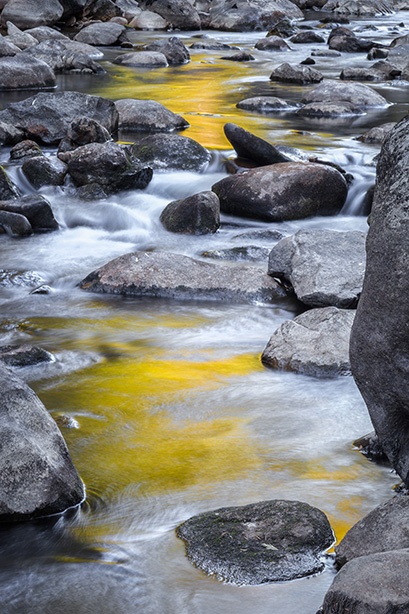This photograph of the Merced River appears in the Native American Historical Novel: Great Spirit of Yosemite: The Story of Chief Tenaya. This Yosemite Book is included in “Books Set in Yosemite National Park“. A 5-star rated book that re-tells the true story of Chief Tenaya and his people during the Mariposa War of 1850/51, at the time of the California Gold Rush. A heartbreaking story of courage and family loyalty as they try to resist the invasion of their homelands.
The Merced River flows into Yosemite Valley through Little Yosemite Valley before dropping over Nevada and Vernal Falls. It then flows through the valley, where it is joined by several creeks. Finally, it flows out of the western end and down into the San Joaquin Valley.

The Merced River, Yosemite National Park
The Merced River is a 145 mile (233 km) tributary of the San Joaquin River, running from the Sierra Nevada into the San Joaquin Valley in central California. Initially, the river enters Yosemite Valley through Little Yosemite Valley, dropping over Nevada and Vernal Fall. It then meanders through the meadows and woodlands of the valley, where it is joined by several creeks. Finally, it flows out from the valley through the western end and down into the San Joaquin Valley.
Miwok and Paiute people, and the Ahwahneechees, lived along the river for several millennia before Mexican and Spanish expeditions came through during the 19th century. At the time of the California Gold Rush tens of thousands of new settlers also came to California. Once there, they displaced the indigenous population. New towns, and a railroad, together with logging and mining were established. Subsequently, the Ahwahneechees were driven from Yosemite (Ahwahnee) during the Mariposa Indian War of 1850/51.
The name “Merced” is believed to have been given by a 19th-century Spanish expedition led by lieutenant Gabriel Moraga. Apparently, the colonists arrived on the south bank of the river hungry and raging with thirst. So, they decided to call the river “Rio de Nuestra Señora de la Merced” (River of Our Lady of Mercy) because it provided them with the water they so desperately needed.
Today, the Merced River is used for many recreational activities, including swimming, rafting, fishing, hiking, and camping.